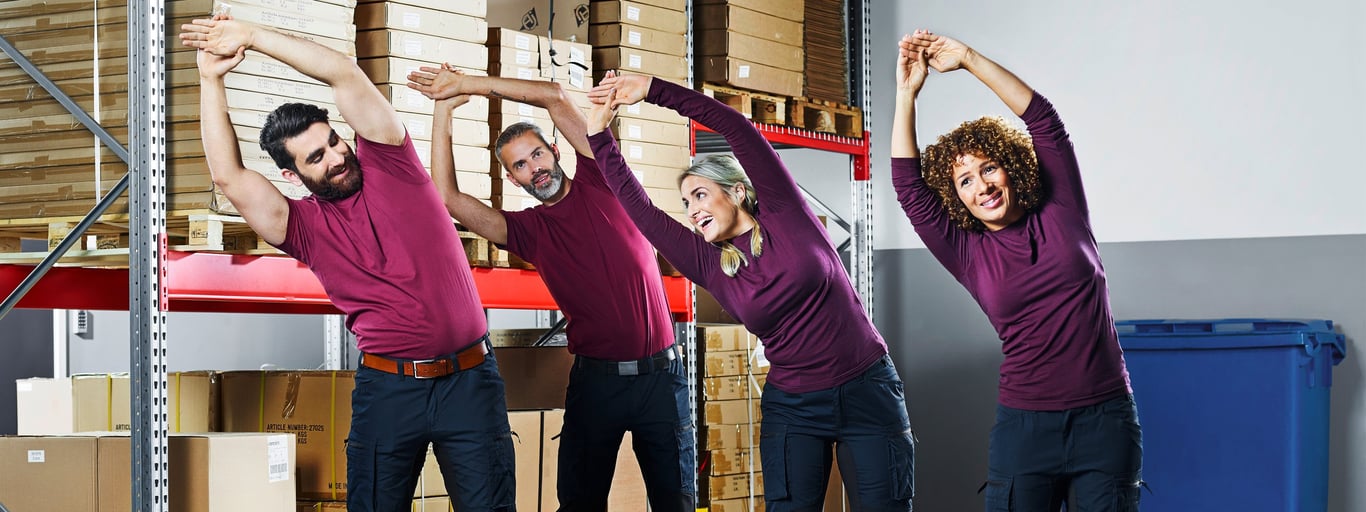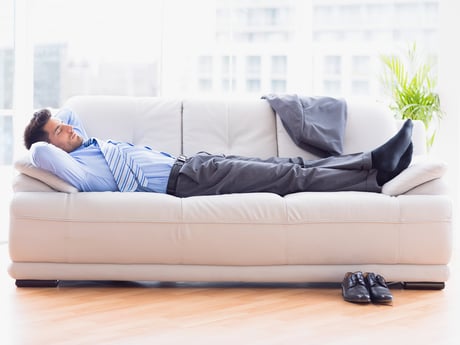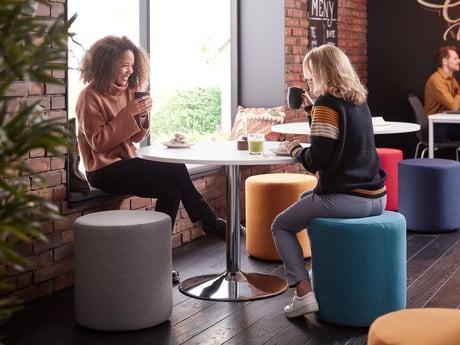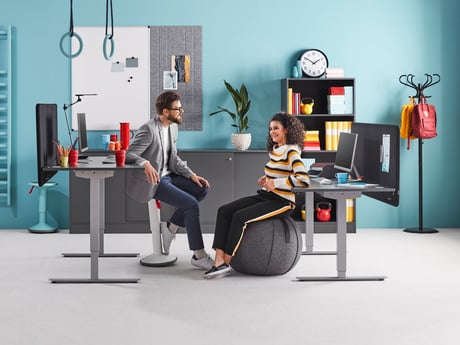
Why staying fit and healthy at work is more important than ever
The pandemic has highlighted the importance of exercise and physical wellness in a number of ways, from the talk of increased risks of COVID-19 for people of above average weight to the mental health benefits of staying active. The extra effort it took to exercise under stay-at-home orders also played a role, making many people think about it in a way they maybe hadn’t before. Significantly, it has also brought attention to the need for companies to prioritise employee health.
Around two thirds of adults in England are over a healthy weight (according to the Health for England Survey 2019). We all know that being overweight has numerous long-term health consequences but, pressingly, it has also been identified as one of the risk factors for becoming seriously ill from COVID-19.
This heightened risk has come at a time when addressing physical health is one of the areas that has been impacted most by repeated lockdowns. With gyms and swimming pools shut for much of the last year and team sports and fitness classes unable to take place, there has been huge disruption to normal exercise routines and people have been prevented from taking part in the activities they usually rely on in order to keep fit. Coupled with stay-at-home orders, screen time and sedentary behaviour have soared. It’s only now that we are able to address the problem properly.
Given how much of the day is spent working, it is vital that workplaces can support employees in their goal to improve fitness. This means business leaders prioritising employee health by putting in place comprehensive wellbeing policies, altering office design to encourage physical activity and providing resources and support to empower staff to make healthy choices.
The office may be responsible for a lot of sitting time, but it is also one of the places with the most potential for addressing the problem. Now is the perfect time to reimagine the workplace and provide opportunities for wider movement throughout the day. This can be done by creating different zones to encourage people to change where they work throughout the day and/or by introducing a variety of active workstations with office furniture including:
Find out more in our guide to how to improve mental health at work.
As routines start to normalise and many remote workers prepare to return to the office for the first time in over a year, staying fit and healthy is more important than ever. The pandemic has changed priorities for many people and many businesses; there is no doubt now that health – both mental and physical – should come top of that list.
This heightened risk has come at a time when addressing physical health is one of the areas that has been impacted most by repeated lockdowns. With gyms and swimming pools shut for much of the last year and team sports and fitness classes unable to take place, there has been huge disruption to normal exercise routines and people have been prevented from taking part in the activities they usually rely on in order to keep fit. Coupled with stay-at-home orders, screen time and sedentary behaviour have soared. It’s only now that we are able to address the problem properly.
The problem with work
The workplace is one of the biggest contributors to sedentary behaviour. Working from home hasn’t changed that; in fact, it has made the problem worse in many ways with fewer opportunities for movement during the day, poor desk set-ups and many people working longer hours.Given how much of the day is spent working, it is vital that workplaces can support employees in their goal to improve fitness. This means business leaders prioritising employee health by putting in place comprehensive wellbeing policies, altering office design to encourage physical activity and providing resources and support to empower staff to make healthy choices.
Giving employees more flexibility over their workspace
One of the lessons learnt from remote working is that employees benefit from flexibility. This applies first and foremost to working hours and location. But it also applies to workspace design. Different employees work best under different conditions and, equally, different tasks suit different environments.The office may be responsible for a lot of sitting time, but it is also one of the places with the most potential for addressing the problem. Now is the perfect time to reimagine the workplace and provide opportunities for wider movement throughout the day. This can be done by creating different zones to encourage people to change where they work throughout the day and/or by introducing a variety of active workstations with office furniture including:
- sit-stand desks,
- standing meeting tables,
- active seating, such as Pilates balls and wobble stools,
- desk bikes or pedal exercisers,
- and desk treadmills.
Getting back into a "normal" and healthy routine
Being back in the workplace can also help to re-establish a routine with more opportunities for daily exercise in and out of the office. These opportunities could include:- cycling to work,
- walking as part of a commute,
- standing up while working,
- taking a "walk and talk" meeting,
- going for a walk at lunch,
- or re-joining a gym or fitness class near the office and making it a habit to go a few times a week before or after work.
Addressing mental health
Another consequence of the pandemic is the rise in stress, anxiety and depression. As people return to work and start doing more normal activities again, both individuals and businesses need to find ways to address these mental health concerns. Physical activity can have a significant knock-on effect on emotional wellbeing by boosting energy levels and mood, relieving stress, increasing self-esteem and improving memory and sleep. Office design may seem inconsequential in this regard, but control over the work environment can help, giving individuals the power to make the right decisions for them and their health.Find out more in our guide to how to improve mental health at work.
As routines start to normalise and many remote workers prepare to return to the office for the first time in over a year, staying fit and healthy is more important than ever. The pandemic has changed priorities for many people and many businesses; there is no doubt now that health – both mental and physical – should come top of that list.
You can read more about how to tackle sedentary behaviour at work in our free-to-download report.
Get the latest product launches and offers sent direct to your inbox
Do you want to receive exclusive offers, information about new products and inspiration on how you can improve your workplace? Sign up for our free newsletter and be the first to receive our best offers!Please wait...
*By clicking subscribe, I confirm that I have read the privacy policy.



